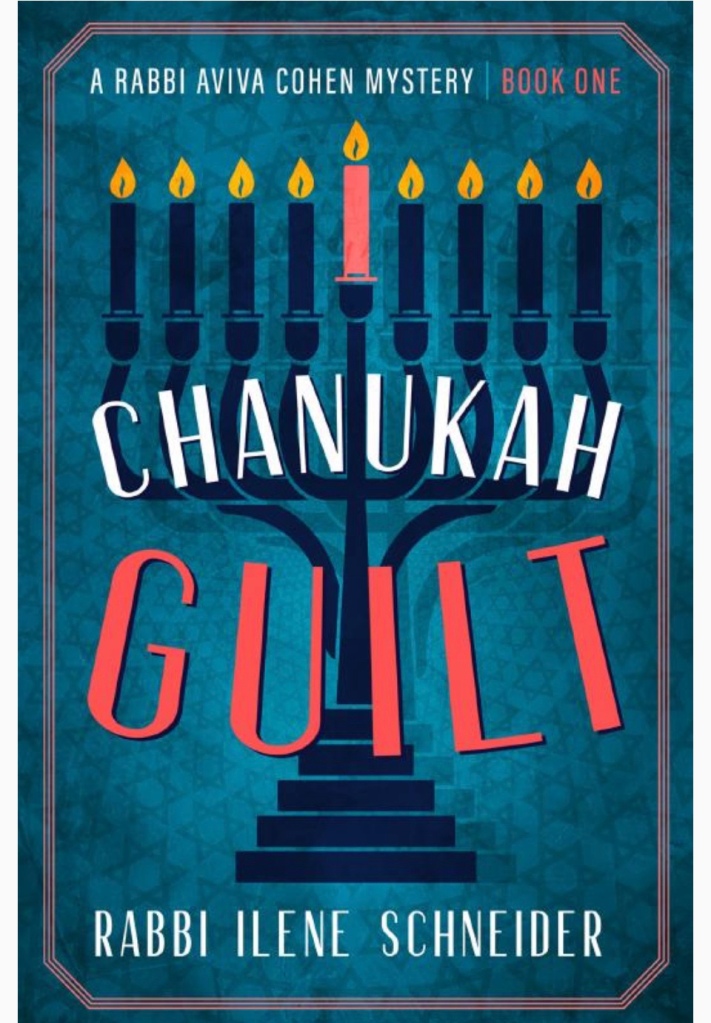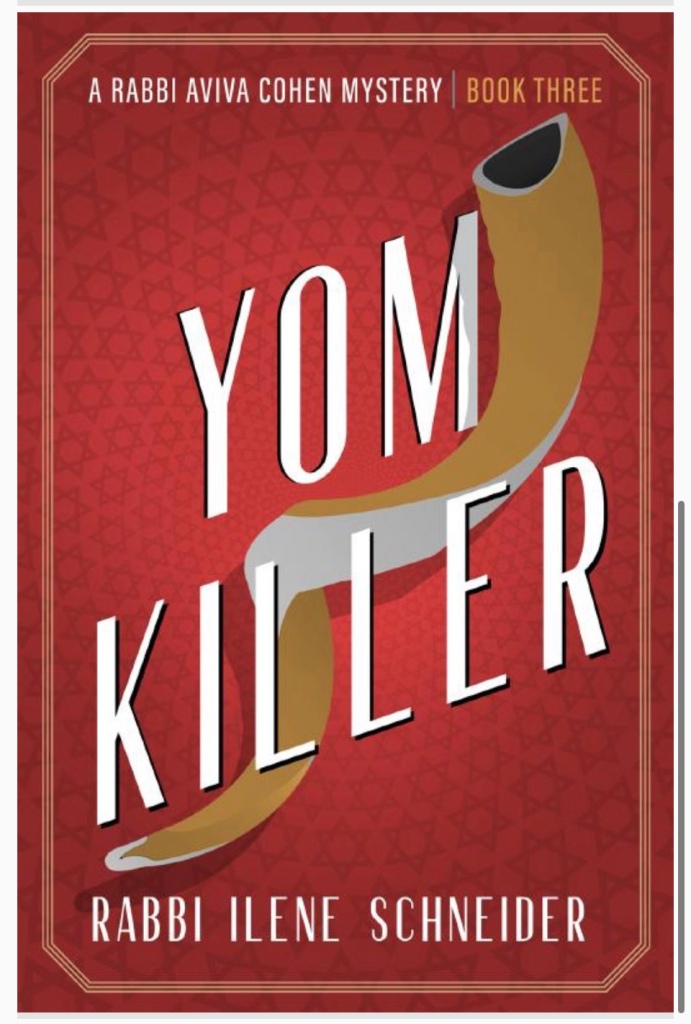When I submitted the first draft of “Triangle,” my short story for the anthology JEWISH NOIR II, the editor Ken Wishniak suggested I condense or even delete several paragraphs of backstory, which he felt stopped the story’s momentum and pacing. After several attempts, and a switch from a third person to first person narrator, I finally found the story’s voice, and the addition of a twist last line gave the story its “noirish” flavor. But, fortunately, I had saved the earlier versions.
Fortunately, because after I volunteered to read a seven-minute long story at Noir at the Bar at this year’s Creatures, Crimes, and Creativity conference, I realized I had nothing short enough to read. I did write a new story, but, try as I might, I could not cut out enough of it to make it fit the time frame and not sound like a synopsis or outline. So, I opened the saved files of the early drafts of “Triangle,” copied the backstory I had deleted, retained the third person narrator, and constructed a backstory/prequel.
SPOILER FOR THOSE WHO HAVE NOT READ THE STORY OR HAVE FORGOTTEN ITS OPENING: The last line of the backstory/prequel is the first word of the full story. (Available at tinyurl.com/y7kcvubj)
Hope you enjoy it.
From the first day of kindergarten, Rose hated her life. Her family. Her neighborhood. Her school. Even her friends, not that she had any. In other words, her … everything. And it was all the fault of her name. What kind of name was “Rose” anyway? She had been born in 1979, not 1879.
Lots of kids had weird names. There was even a Rainbow in her class. But Rose was the one the other kids in school always made fun of. “Ring around the Rosie,” they would taunt.
“Stop!” she would scream, which made them laugh harder. Yet she would be the one who would get into trouble, be sent to the principal’s office, referred to a series of therapists to deal with her “anger management issues.”
Her parents couldn’t understand why Rose hated her name so much. “You should be proud to be named in memory of your great-great grandmother,” they said every year when they lit the yahrzeit candle in memory of the hero who had died in some fire in 1911.
But all Rose knew about her namesake was that she would never be able to live up to her example, so why even bother to try? After all, how often does one get the chance to sacrifice her own life to save that of others? It’s what her great-great grandmother, a twenty-six-year-old widow with three children, did during what was immortalized in history as The Triangle Shirtwaist Factory Fire.
One day, Rose had reached the breaking point. She had flown into a rage, torn all the family photographs, including one of the Original Rose, and set the pile of scraps on fire, burning down the house. It was then that she was sent to a residential treatment center for violent offenders ages ten to fifteen. It was there that she was raped.
On paper, the home seemed ideal. It was clean and well-staffed, offering individual and group therapy, classroom instruction and tutoring. Each “resident” – the word avoided the stigma of “patient” and wasn’t as impersonal as “client” – had a private room.
They also had a good-looking, charming, charismatic, twenty-five-year-old maintenance worker, who was tall, blond, buff, and had a habit of seducing naïve young adolescent virgins. Rose was one of his victims. It wasn’t discovered until an astute nurse realized Rose hadn’t come by for sanitary napkins for a couple of months and called in a gynecologist to make sure she was okay. She was, if a four-month pregnant thirteen year old can be considered “okay.”
The pregnancy was terminated and Rose had her tubes tied. What should have been a medically simple procedure turned out to be serious when Rose contracted an infection and had to have her tubes not just tied, but removed.
The rape was never reported to the police and certainly not to the state regulatory agency, but handled by the lawyers for the parents and the facility. Rose’s parents were mortified and sure Rose had been the instigator. They wanted to avoid more negative publicity about their wayward daughter, publicity that would reflect poorly on them and, worse, on their perfect daughter Jennifer, only a year younger than Rose. The rapist, of course, was fired without references, and left the area. The facility agreed to a lump sum payment, in the form of a trust fund, to which was added the huge malpractice settlement from the hospital. Rose’s parents would be executors and pay her a suitable monthly allowance. The fund would revert to Rose when she was twenty-five, but only if she were found to be mentally stable.
By the time Rose was eighteen, she had aged out of the residential centers she had continued to live in. She was considered fully “cured,” or, at least, controlled, through prescription drugs. Better living through chemistry. Against all odds, she had gotten a decent education and decided to go to nursing school. Her parents claimed to be proud of her. Their Rose was going to follow the example of her great-great grandmother by helping save the lives of others. But Rose knew better.
She was still filled with hate – of her name, her job, her life, everything. Before the rape, whenever the latest in her long line of therapists would ask Rose why she always felt angry, she would shrug, knowing how ridiculous it would sound to say, “My name.” But now she had a reason the therapists could accept. And as if the rape weren’t enough of a reason, there was the embezzlement that nearly depleted her trust fund.
Rose knew nothing about the trust fund until she was close to thirty. Her parents had both died shortly before her twenty-fifth birthday, and her sister Jennifer was made the executor of the trust fund. Jennifer continued to pay out the allowance, which was a nice bonus to Rose’s salary, but not enough to afford to live in Manhattan, which Rose longed to do. Even after Rose’s twenty-fifth birthday, Jennifer didn’t tell her about the trust fund. If she had, she wouldn’t have been able to continue to collect the very generous stipend she felt she was owed for administering her sister’s assets, as well as for the mental anguish of being related to such an embarrassment.
Rose found out when a quarterly statement was misaddressed to her instead of her sister. She immediately reported her sister to the fraud division of the state’s attorney general’s office.
In the end, Rose’s victory over her sister was almost too easy. By this point in her life, Rose was adept at faking mental stability. She refused to accept mediation and insisted on a public jury trial. Her lawyer, with her permission, detailed the rape and its aftermath. The jury admired how well she had overcome her early trauma. Jennifer was found guilty by the jury and the press. She was humiliated and vilified for violating her fiduciary responsibilities and taking advantage of her sister. She was sentenced to jail and had to make restitution, which amounted to bankruptcy. Jennifer’s husband divorced her and was granted full custody of their child.
Despite the huge amount Jennifer had stolen from the trust fund, the remaining money still was enough that Rose could have quit working and lived comfortably on the interest alone. But she didn’t know what she would do instead. She had acquaintances and co-workers, but no real friends. She hated to travel. She had no hobbies. And she actually enjoyed her job. She moved out of her overpriced, tiny apartment furnished with thrift shop leftovers in the Bronx and bought an equally overpriced, tiny apartment with newer furniture in Manhattan. But she still felt empty – and angry. Then she found something that helped relieve her hatred and control her anger.
Murder.



